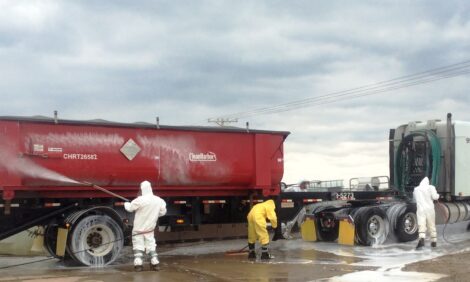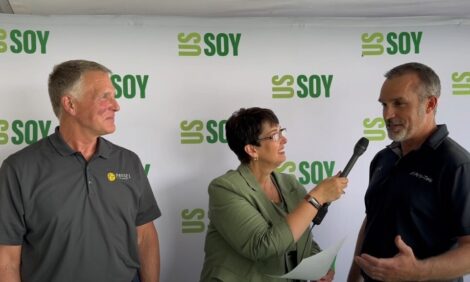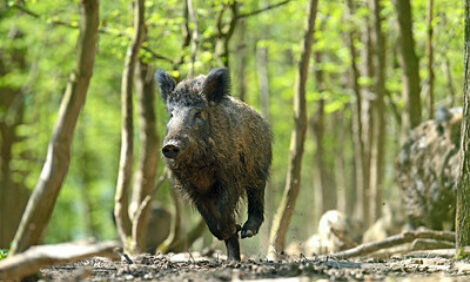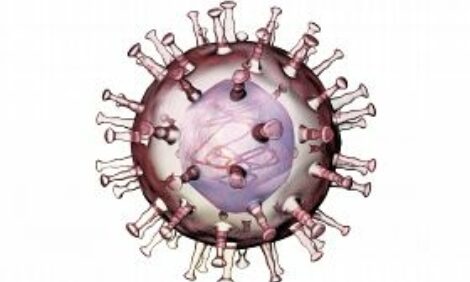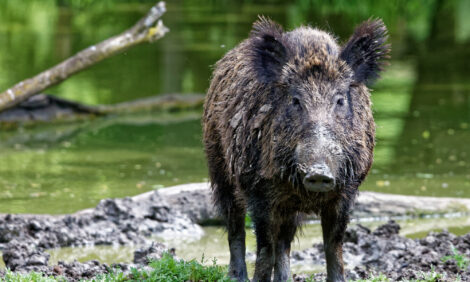



African swine fever in wild boar: population management in infected areas
Population management in large areas in very difficultEditor's note: the following is an excerpt from African swine fever in wild boar populations - ecology and biosecurity. It was created by the FAO, WOAH and European Commission. Additional content from the booklet will be shared as an article series.
Coordinated and efficient reduction of wild boar numbers on considerably large spatial scales (e.g. thousands of square kilometres) is extremely difficult to achieve and to be maintained over the years, as might be required given the persistent nature of the disease. It is a very complex and challenging task in the areas where wild boar populations demonstrate strong population growth. Systematic collection of demographic and population data for wild boar at high geographical resolution is a very important baseline component of a sustainable, coherent management strategy.
Various population management and control approaches (Massei, Roy and Bunting, 2011) and ways of mitigating the role of hunting in the spread of ASF should be considered based on local knowledge, the context and disease-spread risk assessments, rather than the adoption of a simple solution for the whole country or region. Different parts of the country, and even different hunting grounds, may require different methods and/or combinations thereof that might be more efficient for limiting the implications of ASF in the long term or at particular times of the year. Some of the available options, including some radical or potential solutions such as poisoning and immunological contraceptives (not currently allowed by legislation, but which are being discussed in some countries), are briefly reviewed below in light of their applicability to managing the risks of ASF related to virus circulation in wild boar populations.
Non-lethal methods involving movement restriction
Permanent boar-proof fencing. Construction of reliable long-lasting boar-proof fencing requires resources, time and effort. Such fences are usually made of woven wire mesh and need to be a minimum 1.5–1.8 m high and fixed to the ground in order to provide effective movement restriction for wild boar. The fences can be fitted with strands of barbed wire on the top and sides of the mesh net. Electrification of fences increases their effectiveness. The fence design also depends on whether the task is to keep animals in or out of the fenced area. Several specifications have been identified (see Wild Boar, no date) for building wild boar-proof fencing and those need to be carefully considered before making any decisions.
As a measure aiming at physical prevention of any movements of animals between infected and disease-free areas, the fence design should also account for irregular factors such as the presence of oestrus females or a desirable food source/hunger as well as a requirement for cover for farrowing or the population’s desire to escape from threats such as hunting or other means of persecution. Where terrain is rough, stony or otherwise difficult to navigate, such as wetlands or densely forested areas, fence building is problematic, and its prompt erection in response to ASF wild boar cases would be challenging or unfeasible.
Fences will not prevent the long-distance spread of the virus since biological materials and contaminated fomites would still have enormous potential to introduce disease well behind the fence (Photo 4). Effective prevention of the spread of ASF and the long-term ecological implications of the large-scale permanent fencing need to be carefully evaluated, particularly given that such measures are not aligned with nature and wildlife conservation concepts (Trouwborst, Fleurke and Dubrulle, 2016; Linnell et al., 2016). Temporary fencing can provide certain assistance when there is a focal introduction and localized spread of the virus as was the case in Belgium and Czechia (see chapter 4). They help to reduce the contact rate among individuals and groups of wild boar by creating a habitat fragmentation effect and thus potentially slowing down the speed of the geographical spread of the virus and increasing the window of opportunity for local disease eradication through other appropriate depopulation measures
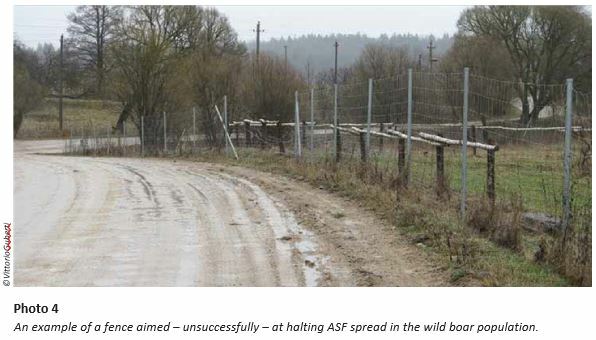
Electric fencing. Different electric fencing designs are available on the market for wild boar distraction. Both permanent and portable solutions exist including solar-powered autonomous systems. Most electric fences are developed for use in populated areas to seasonally protect relatively small parcels of land with crops, gardens and property from damage due to invasions of wild boar. Although electric fencing is often reported to be effective in preventing crop damage, it cannot provide long-term protection of larger and more uninhabited areas (Reidy, Campbell and Hewitt, 2008). Electric fencing requires construction, a system for regular power supply, dedicated daily supervision and maintenance. Their year-round use is problematic in the climatic conditions of the temperate north and east European forests due to the snow and the freezing temperatures. The functionality of the fencing can also be severely compromised by larger species of wild ungulates, such as deer or elk. Electric fences do not withstand high pressure and do not completely block the movements of animals. They may reduce the overall number of movements, but will not stop animals motivated by hunger, persecution and sexual interest.
Other deterrents. Deterrents can be chemical, visual, acoustic or a combination thereof. Studies and practical experience in several affected countries generally find use of deterrents to be rather inefficient means of distracting wild boar and reducing crop damage (Schlageter and Haag-Wackernagel, 2012). Closer investigations demonstrated that commercial products of this kind produced effects that were negligible or statistically insignificant (Schlageter, 2015). Deterrents are unlikely to have significant impacts on the long-term prevention of wild boar movements and the potential spread of infection. Even if some effect can be initially achieved, wild boar quickly adapt to them. These deterrents can be used as temporary solutions to contain focal incursions of the virus in new areas (see chapter 4) but are useless as a long-term strategy for broader-scale disease eradication.
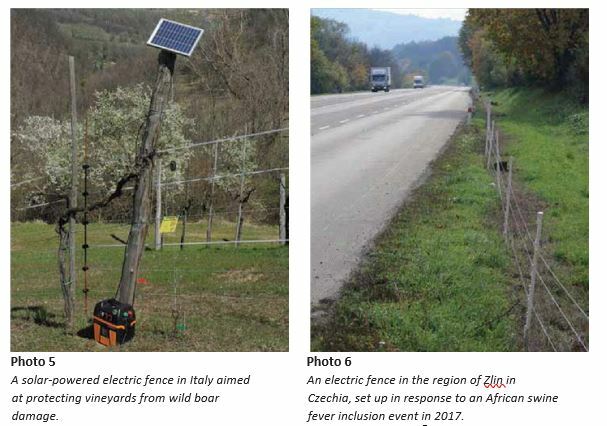
Non-lethal methods with impacts on population demography
Regulation of supplementary feeding. Supplementary feeding is a widespread and very popular population management practice known to contribute significantly to the growth of wild boar populations (Selva, Berezowska-Cnota and Elguero-Claramunt, 2014; see also chapter 2). Whenever the strategic management goal is to reduce wild boar numbers significantly, strict regulation of supplementary feeding should be considered the primary and the most feasible intervention. To facilitate hunting from towers, provision of food as bait (and not for subsistence) might be needed, but its amounts should be reduced dramatically. For example, in the European Union, guidelines set a limit of ten kilograms per square kilometre per month which can be used as an indicative amount in most parts of northern and eastern Europe (European Commission, 2018). Commercially available automatic feeders are particularly useful as they can help to reduce the amount of food provided at any one time and can decrease human attendance at feeding sites. These feeders help manage and organize hunting activities, and they minimize the disturbance of animals, as well as the risk of humans spreading infections from site to site. Baiting of hunting sites with salt licks, which can often effectively attract wild boar, can be used instead of massive provision of food or other smelly attractants such as diesel, creosote or commercially available products (Lavelle et al., 2017). Another solution to attract and retain animals in one location while reducing their food uptake is to use devices that complicate access to food, such as hog pipes. Banning supplementary feeding is the least destructive population management approach, and it should be part of standard wild boar management. It will encourage the local wild boar population to adopt a more natural relationship with the environment, but by the same token, could include winter mortality and the decreasing fitness and fertility of reproductive females. Natural regulation might prove to be a more efficient means of population control than hunting. Other areas of concern are a possible increase of damage to winter crops and the extended home ranges of animals. The effects of a feeding ban will depend on winter weather conditions and are likely to be most prominent in the colder climates and during less favourable years or in habitats with low natural food resources, such as coniferous forests.
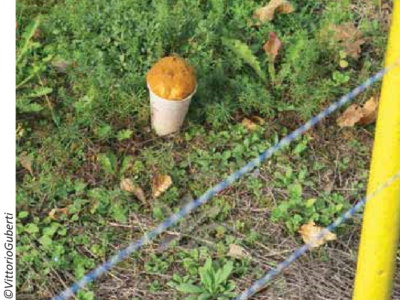
Contraception: Contraception is a promising non-lethal method that can be used to reduce the reproductivity of animals and potentially help with many human–wildlife conflicts, including the wild boar population. The general public, who often criticize lethal population control methods (Massei and Cowan, 2014), find contraception more humane and ethical. However, a fully operational method of contraception for wildlife species should fulfil a number of criteria, without which the method is unlikely to be accepted and adopted in practice. The contraception should:
- be effective when orally administered;
- be strictly species specific;
- have high efficacy (70–80 percent);
- prevent reproduction in both sexes;
- be environmentally safe;
- remain stable and effective within a wide range of environmental conditions (temperature, sunlight, precipitation);
- have no negative impact on the behaviour and welfare of the treated species.
At present, a contraception method that fulfils these criteria remains the subject of ongoing research and is neither commercially available nor officially allowed in wildlife population control programmes in any of the affected northern and eastern European countries (or anywhere else in Europe).
Three classes of contraceptives have been developed for application in different wild species: hormonal, chemical and immunizing. To date, only immunological contraceptives have been successfully tested in wild boar (Massei et al., 2008). Immunological contraceptives are vaccines that induce animals’ immune responses, which in turn suppresses their reproductivity. They work by stimulating the production of antibodies against proteins or sex hormones essential for reproduction, which makes ovulation and spermatogenesis impossible (Massei et al., 2008). Fertility control methods for wild boar and feral pigs in particular face several major difficulties and complications in terms of the practical implementation of immunological contraceptives in free-living populations of these species.
Currently, commercially registered immunological contraceptives are only available as an injectable formulation and require capturing and manually injecting the vaccine into wild boar, which greatly limits its applicability. The availability of an oral immunological contraceptive could make this approach an easier and more effective way to attain desirable population levels. However, delivery methods are not the only (nor the most important) limitation to the application of immunological contraceptive vaccines in wild boar population control.
In Europe, ensuring that immunological contraceptives achieve species specificity (i.e. that they only affect wild boar) is strongly desirable, but wild boar-specific oral formulations are not yet available for use beyond experimental conditions. Without species specificity, the potential risk of negatively affecting the fertility of various non-target species with immunological contraceptives is too high. Unfortunately, the range of potentially susceptible animals includes all mammals. The conservation implications of the extensive systematic application of immunological contraceptives, along with their impact on populations of endangered or endemic species, are therefore of strong and well-justified concern.
Another way to deal with this issue is to develop species-specific immunological contraceptive delivery systems, which would limit non-target species’ access to vaccine-treated bait. Research and experiments with boar-operated system feeders show that this can be achieved in principle (Ferretti et al., 2018), but the approach relies on having a network of feeding locations established. In addition, applying this approach on large spatial scales is much more labour intensive than any aerial or unrestricted manual bait distribution scheme. It is also not quite clear whether boar-operated system feeders can ensure the required individual dosage and population coverage, considering territoriality, strong hierarchical relationships and competition for food both between and within family groups of wild boar. As with any other bait-based vaccine delivery system for wildlife, various factors will likely have an impact on the success of the approach, which must be evaluated through experiments to account for any possible variations due to geographical, climatic and ecological conditions encountered throughout Europe’s wild boar populations.
The lack of oral immunological contraceptive formulations, their currently perceived ecological risk and a number of uncertainties concerning dosage effectiveness, immunity duration and required population coverage, mean that years of research and experimental work will be needed before immunological contraceptives can be adopted and officially approved for use in Europe.
Management approach through a ban on hunting and feeding wild boar
Banning wild boar hunting in or around an infected area is a reasonable solution for disease management where compliance with hunting biosecurity is problematic (e.g. when the preservation of carcasses until the exclusion or confirmation of infection, or the safe destruction of infection, are impossible). This measure can help reduce the probability of spreading disease beyond the infected area in two ways: i) by avoiding the disturbance and movement of animals; and ii) through the total exclusion of risks related to the dressing and transportation of killed animals. This approach should be supplemented with the search for and removal and safe destruction of wild boar carcasses to reduce the environmental load of infection. While hunting bans are a management approach that can be implemented quickly, the hunting community may not easily accept them. Possible side effects, such as an increase in agricultural damage, a medium-term increase in populations, a long-term increase in populations of other game species and a lack of diagnostic material from hunted animals are always mitigated because of the high mortality attributed to ASF. Under certain circumstances, particularly in low-resource settings, stopping both the feeding and hunting of animals is a relatively safe and inexpensive management solution for an ASF-affected hunting ground compared with other approaches involving active population reduction and requiring costly biosecurity measures.
Lethal methods involving population reduction
Driven hunts. If hunting in an infected area continues, careful consideration should be given to the hunting methods used (Thurfjell, Spong and Ericsson, 2013). Recent experience and knowledge of the behavioural response of wild boar to driven hunts suggest that the heavy persecution of animals in areas with an active circulation of ASFV are likely to cause further spread of the infection. Intensive driven hunts, particularly with dogs, may lead to the large-scale dispersion of animals and an increase in their home ranges, which can be counterproductive for disease control (Keuling et al., 2008; Ohashi et al., 2013). A ban on driven hunts is therefore generally recommended when ASF is present in wild boar populations.
Targeted hunting of reproductive females. Conventional hunting bags usually consist of about 50–60 percent of first-year animals (piglets), about 20–30 percent of subadult animals (yearlings or second year) and about 10–20 percent of adult animals (3 years and over). This age distribution of animals in the hunting bag roughly reflects the proportion of each category in an over-age population. However, hunting from towers, which usually comprises three-quarters of the total kill in northern and eastern European countries, provides more opportunities for hunters to have an impact on the demography of local populations and purposely decreases their reproduction potential (Bieber and Ruf, 2005). The selective removal of second-year females (subadults) beyond a normal proportion can help reduce wild boar numbers, but only if such an approach is maintained over five or more years. In countries where the early recruitment of female wild boar into the reproduction cycle occurs normally, it might be worthwhile to also target first-year females, although, in practice, identifying different ages and sexes in the field is difficult. For this reason, the targeted hunting of all females is generally carried out.
To ensure that targeted hunting can be implemented successfully requires having knowledge of the demographic structure of local populations (Bieber and Ruf, 2005). Furthermore, the approach is more time-consuming than non-targeted harvesting methods (e.g. driven methods), requiring up to 30 hours per individual on average (Schlageter, 2015). Targeted hunting is most relevant and feasible at hunting grounds where wild boar numbers are above the regional average density and where animals regularly attend baiting sites and are more accessible.
The drawback of targeted hunting is that the social structure of family groups disintegrates, particularly after the removal of leading sows, with the remaining animals possibly regrouping or redistributing. It is therefore advisable to avoid killing dominant (oldest) sows, especially at the start of the hunting season, as this tends to compromise successful targeted hunting efforts (Massei, Roy and Bunting, 2011). In the longer term, the systematic overharvesting of female boar may lead to the earlier adaptive recruitment of younger females and stimulate larger litters among older animals. At present, empirical data on the population response of wild boar to targeted hunting are very limited, but are likely to differ depending on the cumulative roles of other factors, such as climate, predation and supplementary feeding.
Trapping with euthanasia. In terms of disease control, trapping is the least destructive way to remove animals from a population. The approach requires large investments in trap construction, baiting, daily maintenance and operation. A positive aspect of catching, rather than shooting animals, is that large corral traps could allow entire family groups of wild boar to be captured. However, traps could also increase animals’ capture-related stress and mortality (Fenati et al., 2008). Trapping animals in groups helps avoid such social distress, which may lead to increased disease transmission and encourage long-distance movements. From a practical perspective, the trapping of wild boar is a very costly and time-consuming population management approach. However, when managed appropriately, it can be a highly effective method and help drastically reduce infected wild boar populations.
Wildlife conservation laws and hunting legislation regulate the use of trapping. Regulations on trapping wild boar vary between northern and eastern European countries. In some countries, such hunting is not allowed at all, while in others, only certain trapping methods are illegal. Some trapping methods, such as snaring, that are inhumane and cause suffering are entirely prohibited. Changes in regulations might be required if hunting with traps is to be pursued as a population control method, as these must fully comply with welfare, ethical and biosafety requirements.
In northern and eastern Europe, wild boar trapping is most successful during winter and early spring months, which is when the hunting season usually takes place. However trapping can be successful during spring and summer months, without directly interfering with hunting (Licoppe et al., 2020).
Guberti, V., Khomenko, S., Masiulis, M. & Kerba S. 2022. African swine fever in wild boar – Ecology and biosecurity. Second edition. Chapter 3. FAO Animal Production and Health Manual No. 28. Rome, FAO, World Organisation for Animal Health and European Commission. https://doi.org/10.4060/cc0785





